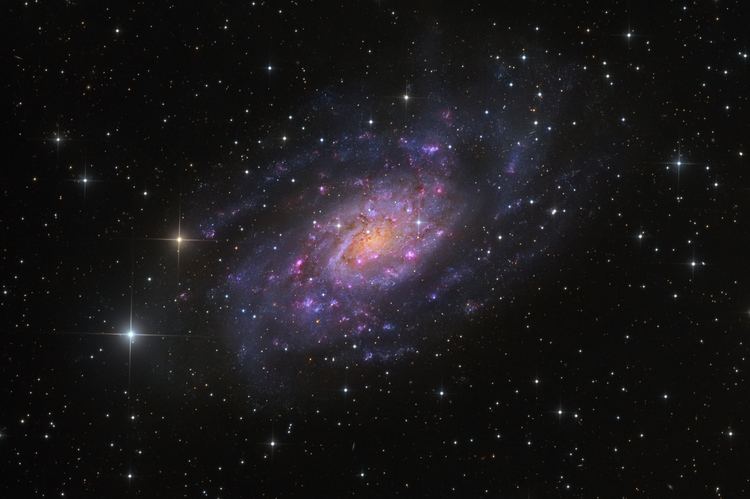Right ascension 07 36 51.4 Redshift 131 ± 3 km/s Type SAB(s)cd Magnitude 8.9 Apparent magnitude (V) 8.9 | Declination +65° 36′ 09″ Distance 8 Mly (2.5 Mpc) Apparent size (V) 21′.9 × 12′.3 | |
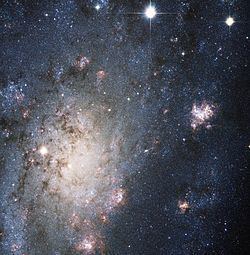 | ||
Similar IC 342, NGC 7331, NGC 6946, NGC 4559, NGC 4631 | ||
Star hopping 46 find ngc 2403 m108 and the owl nebula
NGC 2403 (also Caldwell 7) is an intermediate spiral galaxy in the constellation Camelopardalis. NGC 2403 is an outlying member of the M81 Group, and is approximately 8 million light-years distant. It bears a striking similarity to M33, being about 50,000 light years in diameter and containing numerous star-forming H II regions. The northern spiral arm connects it to a Star forming region NGC 2404. NGC 2403 can be observed using 10×50 binoculars.
Contents
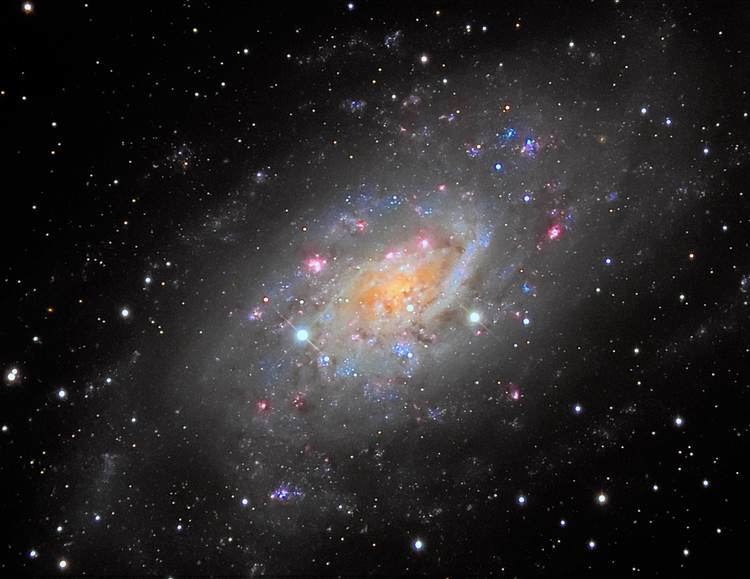
Ngc 2403 sn 2004dj
Supernovae
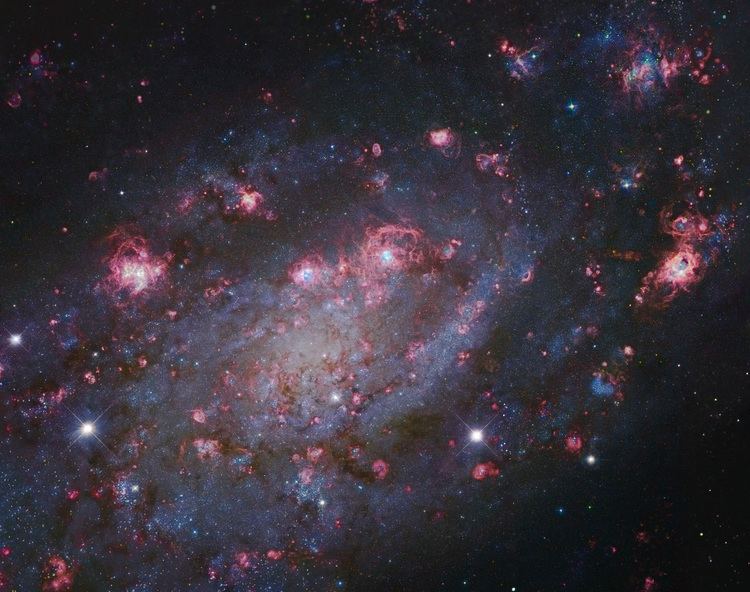
As of late 2004, there had been two reported supernovae in the galaxy: SN 1954J, which attained a magnitude of 16 at its brightest, and SN 2004dj.
History
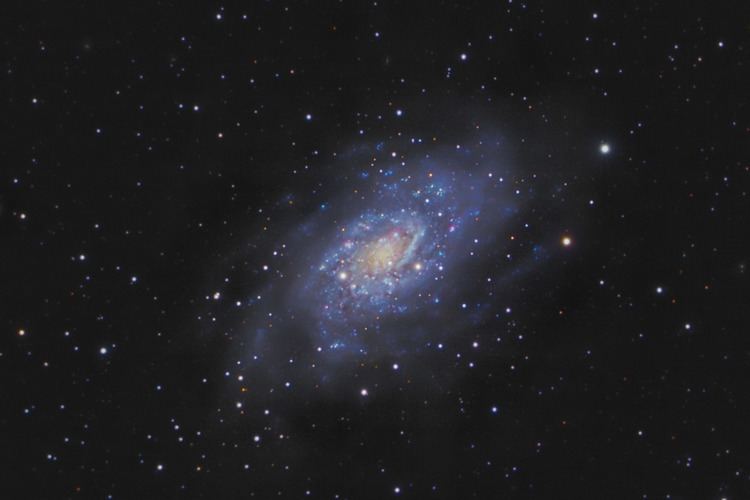
The galaxy was discovered by William Herschel in 1788. Allan Sandage detected Cepheid variables in NGC 2403 using the Hale telescope, giving it the distinction of being the first galaxy beyond the Local Group within which a Cepheid was discovered. He derived a distance of a mere 8 thousand light years. Today, it is thought to be a thousand times further away at about 8 million light years (2.5 Mpc).
